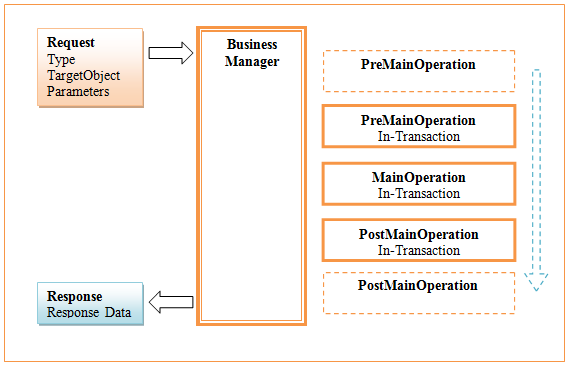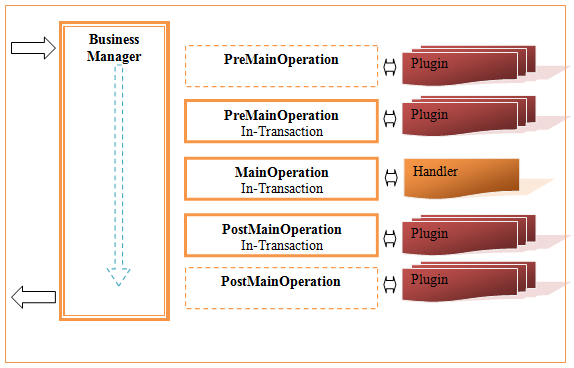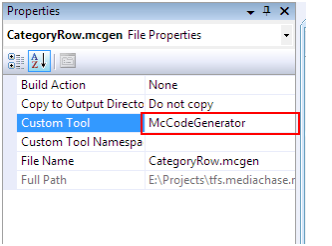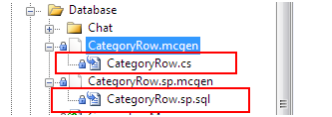Working with entity objects
This section describes how to work with data through entity objects from Business Foundation (BF).
All classes referred to here are available in the Mediachase.BusinessFoundation.Data.Business and Mediachase.BusinessFoundation.Data namespaces.
Business Foundation includes a request-response system to process entity object methods. You can create a request passing the target entity object and request parameters, and call the Execute method. BF will find the handler to process the request, call the handler and return a response with the execution result.

DataContext initalization
The DataContext class has the User and UserTimeZone properties. Entity objects and modules can use them to provide programmatic access to the current user ID and time zone. You should initialize the User and UserTimeZone properties before working with entity objects.
When you create DateTime or Date meta fields, you can pass the user time zone and DateTime values, which will be automatically converted to user time zone.
EntityObject class
The EntityObject class represents a Meta class object. Meta class is an abstract representation of something, whereas an entity object is a usable example of the item the meta class represents.
An entity object can be typed or untyped. Use the EntityObject object and its properties to retrieve and update the entity object in the persistent storage. You cannot create a new EntityObject directly. Instead, use the BusinessManager class and request-response system for calling the Entity object methods.
BusinessManager class
The BusinessManager class represents methods for processing the request-response for entity objects. Call the BusinessManager static methods to initialize an entity object, and to create, update, delete, list and execute custom method for entity objects.
Example: Creation of a new entity object
EntityObject page = BusinessManager.InitializeEntity("Class_1");
page["Title"] = "Title Text";
page["Description"] = "Description Text";
PrimaryKeyId pageId = BusinessManager.Create(page);Request-response system
Use the request-response system to process entity object methods.
Example: Load entity object
LoadRequest request = new LoadRequest(new EntityObject(metaClassName, primaryKeyId));
LoadResponse response = (LoadResponse)BusinessManager.Execute(request);
EntityObject entityObject = response.EntityObject;You can override the default method handler, add custom plug-ins or define a custom method.
Pipeline events
When an instance of a request is created and you call the BusinessManager.Execute method, BusinessManager creates a pipeline and the following events are executed by the BusinessManager class while the request is processed:
- Call the PreExecute method of the appropriate IRequestHandler class for the request.
- Call the Execute method of the appropriate IPlugin classes that are subscribed to from the PreMainOperation event.
- Open Transaction.
- Call the PreExecuteInsideTransaction method of the appropriate IRequestHandler class for the request.
- Call the Execute method of the appropriate IPlugin classes that are subscribed to from the PreMainOperation (In-Tranasaction) event.
- Call the Execute method of the appropriate IRequestHandler class for the request.
- Call the PostExecuteInsideTransaction method of the appropriate IRequestHandler class for the request.
- Call the Execute method of the appropriate IPlugin classes that are subscribed to from the PostMainOperation (In-Tranasaction) event.
- Commit the Transaction.
- Call the PostExecute method of the appropriate IRequestHandler class for the request.
- Call the Execute method of the appropriate IPlugin classes that are subscribed to from the PostMainOperation event.

Handlers
A request handler is the process (frequently referred to as the "endpoint") that runs in response to a request made to a business manager. The most common handler is a default entity object handler that processes default methods. When users execute methods, the request is processed by the business manager through the handler. You can create your own handler that executes custom methods.
Creating handlers
To create a custom handler, you create a class that implements the IRequestHandler interface. You should also implement the PreExecute, PreExecuteInsideTransaction, Execute, PostExecuteInsideTransaction, PostExecute methods.
BF has BaseRequestHandler helper class that you can use as a base class for a custom handler, and which implements the IRequestHandler together with virtual methods.
Registering handlers
After you have created a custom handler class, it must be registered in the Application config file, enabling the application to call the handler. In the config file of the application, create a mediachase.businessFoundation.data/businessManager section.
The following example shows how to register a handler that responds to requests for the Test method for Class_1 meta class. The handler is defined as the class SampleHandler in the assembly SampleHandlerAssembly.
Example: Register a plugin
<businessManager>
<plugins>
<add metaClass="*" method="Update;Create" eventStage="PreMainOperationInsideTranasaction" type="SampleHandler, SampleHandlerAssembly" />
</plugins>
</businessManager>Default methods
Business Foundation implements several methods:
- Initialize creates a new entity object
- Load loads entity object by primary key
- Create creates new entity object
- Update updates entity object
- Delete deletes entity object
- List load collection of entity objects by filter
These methods can all be called and used to simplify method execution.
Initialize
Example: Call the Initialize method to create a new instance of entity object.
InitializeEntityResponse response = (InitializeEntityResponse)BusinessManager.Execute(new InitializeEntityRequest(metaClassName));
EntityObject obj = response.EntityObject;Load
Example: Call the Load method to load an instance of entity object by primary key.
LoadResponse response = (LoadResponse)BusinessManager.Execute(new LoadRequest(new EntityObject(metaClassName, primaryKeyId)));
EntityObject obj = response.EntityObject;Create
Example: Call the Create method to store an entity object in the persistent storage.
CreateResponse response = (CreateResponse)BusinessManager.Execute(new CreateRequest(target));
PrimaryKeyId newPk = response.PrimaryKeyId;Update
Example: Call the Update method to update an entity object in the persistent storage.
BusinessManager.Execute(new UpdateRequest(target));Delete
Example: Call the Delete method to delete an entity object from the persistent storage.
BusinessManager.Execute(new DeleteRequest(target));List
Example: Call the List method to select a collection of entity objects from the persistent storage.
ListResponse response = (ListResponse)BusinessManager.Execute(new ListRequest(metaClassName, filters, sorting));
EntityObject[] objs = response.EntityObjects;Custom methods
To create a custom method, start by creating and registering a custom handler and define a custom request and response.
All requests should be inherited from the Request class, and all responses should be inherited from the Response class.
Filtration and sorting
Call the List method to return an array of entity objects from the meta class. Additional information about FilterElement and SortingElement can be found in the Filtering and Sorting section.
Typed entity objects
Entity objects that are used in your applications can be either typed or untyped. However, BF has other tools to support typed entity objects, with which programming is easier and less error-prone.
Do the following to use typed entity objects:
- Run McCodeGen to create typed entity object C# class.
- Register a new typed object as primary type for meta class.
McCodeGen.exe
The McCodeGen application reads the mcgen file, extracts the meta model, and generates a template and an output text file.
McCodeGen.exe-mcgen:mcgenFile-out:outputFile
| Parameter | Description |
|---|---|
|
mcgenFile |
The meta model file |
|
outputFile |
The output file |
Using mcgen file to create a typed entity object
The McCodeGen application can generate C# classes from the mcgen file. A typed entity object class is very similar to the untyped class EntityObject, but includes properties mapped to column values and column name constant string.
The Mcgen file should include this:
<?xml version="1.0" encoding="utf-8" ?>
<mcgen xmlns="mediachase.codegen.config" extension="cs" template="Templates\BusinessFoundationEntityObject.aspx">
<EntityObject>
<ConnectionString> Data Source=(local);Initial Catalog=TestDB;User ID=sa;Password=; </ConnectionString>
<MetaClass>Book</MetaClass>
<Params>
<add key="Namespace" value="Test.MetaClass"/>
</Params>
</EntityObject>
</mcgen>| Parameter | Description |
|---|---|
|
ConnectionString |
The connection string |
|
MetaClass |
The name of meta class |
|
Namespace |
The typed row C# class namespace |
Paste your connection string and meta class name, declare an output class namespace, then execute McCodeGen from the command line.
McCodeGen.exe -mcgen:BookEntity.mcgen -out:BookEntity.cs
Then you can add a typed entity object class to your .NET project.
Typed entity object registration
After you have created a typed entity object, it must be registered in the application. Create a new handler based on EntityObjectDefaultRequestHandler and override the CreateEntityObject method, which will create and return a typed entity object. After you have created a handler, you should register it.
Visual Studio integration
The McCodeGen application can be integrated with Visual Studio by adding themcgen file to aVisual Studio Project.

Check the properties for your mcgen file (in this case a CategoryRow.mcgen), the "Custom Tool" field should be blank. Enter the name "McCodeGenerator".

The tool should then run automatically. Check to make sure that the output was created by opening the Solution Explorer.

MetaObject class
The MetaObject class allows low-level access to entity object persistent storage. The default handler uses MetaObject to load and save entity objects to a persistent storage. You can use MetaObject to call, get, update or delete low-level methods.
MetaObject extensions
The MetaObject extension allows for capturing meta object events, and the MetaObject extension is registered in the meta class.
To create a custom MetaObject extension, you first create a class that implements the IMetaObjectExtension interface. You should also implement the Init, PreSave, Save, PreDelete, Delete and Clone methods. Use the BaseMetaObjectExtension class as a base class for your extension.
After you have created a custom extension class, you must register it in the MetaClass. You should add the MetaObjectExtensionInfo object to the MetaClass.Extensions collection, passing extension name, extension type and activation type. This enables the extension to receive metaobject events.
Example: Add metaobject extension
// Add MetaObject Extension
metaClass.Extensions.Add(new MetaObjectExtensionInfo(HistoryManager.ModuleName, AssemblyUtil.GetTypeString(typeof
(HistoryExtension)), MetaObjectExtensionActivationType.OnSave));Extension supports several activation types:
- ByRequest (default) - the extension will be loaded on any meta object event.
- OnSave - the extension will be loaded on save event.
- OnLoad - the extension will be loaded on load meta object event.
The use of activation type makes it possible to optimize application performance.
Triggers
A trigger is procedural code that is automatically executed in response to certain events on a particular meta object in a persistent storage. The trigger is mostly used for keeping the integrity of the information on the persistent storage. Lets say for example that we have an "employee" meta class. When a new meta object is added to the employees meta class, new meta object should be created also in the meta class of the taxes, vacations, and salaries.
- Call AddTrigger of the TriggerManager class to add a custom trigger.
- Call RemoveTrigger of theTriggerManager class to remove a custom trigger.
A trigger can be registered on create, update and delete events for the meta object.
Last updated: Mar 31, 2014
